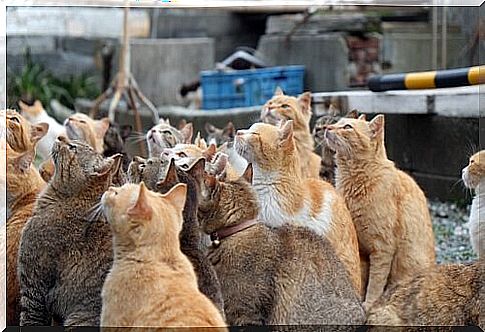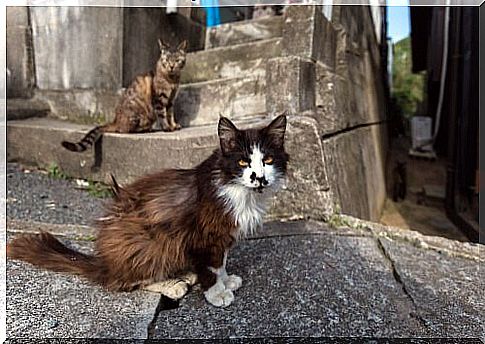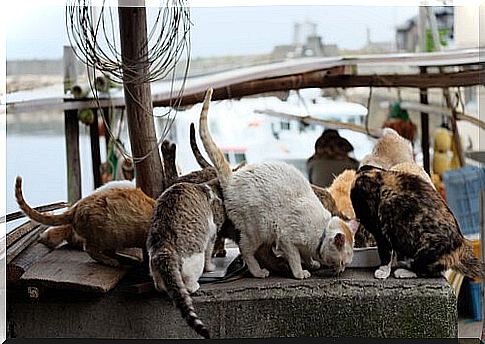The Cat Islands In Japan

On the coast of Japan there are some islands where many more cats than people live: The so-called cat islands. They are very popular tourist destinations, but they are not as lucky as it seems at first glance. Get to know Aoshima, one of the cat islands in Japan.
Where are the cat islands?
Aoshima is one of the most famous cat islands in Japan . Only 15 people live on it, but more than 100 cats. This island belongs to the Ehime prefecture in the south of the country.
Another of the most famous cat islands in Japan is Tashirojima, which receives around 10,000 visitors annually. It is located in Miyagi Prefecture, in the northern third of the country and much closer to the coast than Aoshima.
In both cases, the island is reached by boat from the main island of the country. The crossings depend on many factors, but both take about half an hour. The departure times vary depending on the season and the number of visitors, but are usually limited to a few trips a day.
How did it come about that so many cats live here?
The biggest attraction of these islands is the enormous number of cats that live on them. In the case of Aoshima, it is estimated that there are around six cats per inhabitant. These tame and friendly animals are dependent on people. Because there is not enough prey to feed on the hunt.
Due to the influx of tourists, the animals are used to the presence of strangers on the island. They know how to pose for photos and get the tourists to feed them; therefore, they are not like the common street cats found in other parts of the world.

Visitors who arrive at these places are presented with a sight that cannot be found anywhere else in the world: hundreds of friendly cats that are easy to photograph and also seek contact with people.
The cat islands are in a predicament that is difficult to resolve: the tourists who were present have fed the cats and their population has grown in an uncontrolled manner.
However, tourists leave no economic or human resources to keep this population healthy, sterilized, or well fed.
Caretaker on the cat islands in Japan
Many visitors say that many of these cats suffer from common and easily treatable diseases. The most common are respiratory and eye infections, although injuries, skin problems, and many similar problems also exist.
In addition , nobody cares about the sterilization of the cats. That is why the population on the cat islands continues to grow.
For several years now , groups of non-resident volunteers have been coming to the islands to treat the animals. They also have a modest TNR project (Trap-Neuter-Return, in German: catch-sterilize-releasing) started.
Despite their best efforts, their economic capacity is insufficient to care for all of the cats that live in these locations.

When asked how to improve the quality of life for these cats, one of the visitors to these islands said that he was doing a report for a magazine:
The impact of tourism
Indeed, with the presence of foreigners bringing food, the population of cats on the island has grown and become another tourist attraction. The more people visit the island, the more food there is for the cats to keep reproducing.
However, the presence of humans on the cat islands in Japan does not guarantee the health of these animals, nor the hygienic control of the places where they live, nor their veterinary care.
It’s like a vicious circle because when tourism disappears the cats will run out of food, but if tourism is not controlled the cats will continue to reproduce.
Aoshima and Tashirojima are not the only places where this happens: more than a dozen islands have been counted in the same situation in Japan alone. There are other tourist areas where, for example, the population of monkeys or seagulls has gotten out of control due to the abundance of food.
Tourists visiting these destinations should be aware of the impact their presence has around the world. It is possible to practice responsible and ecological tourism and enjoy the wonders of the flora and fauna of our planet without negatively affecting them.









